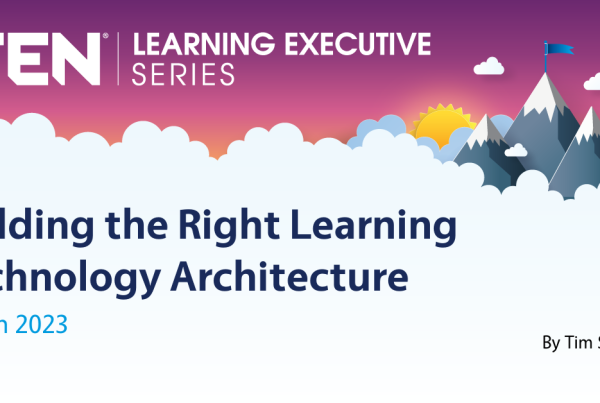
By Karen Foster and Debbie Deale
There are a lot of top 10 lists out there. Some are just for fun and some are useful.
Consider the list created by the World Economic Forum in its 2022 Skills Outlook. That list identifies the top 10 capabilities employers are looking for in their team members and includes skills like critical thinking, complex problem-solving, technology design and programming, emotional intelligence, systems analysis and evaluation and others. Unfortunately, most working professionals have never learned these skills.
To be successful in today’s work environment, professionals must be able to learn and continue learning as things evolve. This is especially true in the complex biopharma industry.
But there’s a challenge: Learning is a skill all by itself. And for many of us, it’s not a skill that is very well developed. This has implications for learning and development (L&D) teams tasked with helping develop team members and begs the question, “Does L&D have an opportunity to boost outcomes for all by actually training learners how to learn?”
We think the answer is yes. Let’s explore why and how.
Why Learning Skills Typically Aren’t So Great
Many adults today — particularly in North America — were not formally taught the skill of learning. They attended schools in which the prevailing educational philosophy was that brains are a blank slate that need to be filled up with knowledge. The educational focus was on pushing facts without necessarily tasking the learners with thinking about the information, how to engage with it and how to really learn it.
The good news is that’s gradually changing. Many K-12, undergraduate and graduate schools today are taking the approach that prioritizes deeper processing and application of information over simple fact retention and recall. So, as time goes on, professionals’ overall learning skills should improve.
For now, we have a challenge.
Boosting The Learning Skills
Even though we have a general challenge regarding learning skills, some have found ways to boost their skills even in the absence of learning training.
These learners have worked out strategies to maximize their own learning potential and skills. After years of engaging with multitudes of learners, we believe that it’s possible — and even desirable — to boost learning skills for others by capturing those strategies and regularly baking them into other learning programs.
If L&D helps learners boost their learning skills, it can create a big win for all key stakeholder groups.
- The learner wins because they’ll be able to get the development they need more effectively and efficiently. For example, they won’t need to come out of the field as much for week-long training sessions.
- The company wins because learners will be better equipped to deliver the business results the company needs.
- L&D wins because it becomes much more efficient, with every program delivering better and faster results.
Tips for Learning How to Learn
There is a wide range of methods that L&D professional can use to incorporate learning training into their learning programs. Here, we outline just a few. This list is definitely not intended to be exhaustive, but it does illustrate some key concepts.
Use pre-training self-appraisals – Sometimes, learners don’t know what they don’t know. Or they’re overconfident in what they think they know or can do (e.g., overconfidence bias, the Kruger-Dunning effect). In these cases, it’s often best to level-set the learner up-front with on the knowledge or skills in question. A pre-test is one technique to achieve this.
Another example: give reps a list of potential questions from a physician and ask them how they would answer those questions using information in the package insert. This type of activity forces a learner to engage with the material in an active way and can demonstrate that he or she might not have as much mastery over it as initially thought.
Present a list of questions that the learning program will answer – This accomplishes several things: it gives learners a preview of what they’ll be learning, gets them thinking about the material at the start, and provides a mechanism by which they can gauge their learning progress.
In addition, questions drive curiosity. It’s almost impossible for one to resist looking when someone belts out, “What’s that?” Being curious is a key behavior in learning.
Have the learner make a plan – In most cases, the necessary knowledge or skills can’t be properly imparted in one session. It takes time to gain familiarity, generate confidence and ultimately build mastery. That process should be proactive and intentional, and that takes discipline.
Working with learners to build a learning plan helps them think about how they will boost their ability to internalize and apply the material over time – think spaced learning.
Encourage deliberate practice – Having a plan is great. Putting into practice is even better. A learning program must guide learners to set aside the time to practice in a purposeful and disciplined manner.
For example, learners can use verbalization exercises to practice delivering key product messages, payer value propositions, etc. and practice with a specific goal in mind.
Have learners generate questions – As learners encounter new information via a learning program, L&D should have them generate questions that they should subsequently answer.
For example, after reading a specific section of a clinical study, the learners could ask themselves, “Can I clearly articulate the three key takeaways from this section?” Then they should do that.
Conclusion
Again, these methods above represent just a few examples of the concepts we’ve covered. With a little thought, a creative instructional designer could probably outline many more.
It’s important to remember that L&D can create a win-win-win by empowering learners in how to learn. Strategies for boosting learning skills can be effectively baked into training at POAs, launch meetings and more. By imparting those strategies to the learners over time, their learning skills should improve and, in turn, empower faster learning of new skills for 21st century success.
Karen Foster is a partner with Salience Learning. Email Karen at kfoster@saliencelearning.com. Debbie Deale is a learning architect for Salience Learning. Email Debbie at ddeale@saliencelearning.com.









One Comment